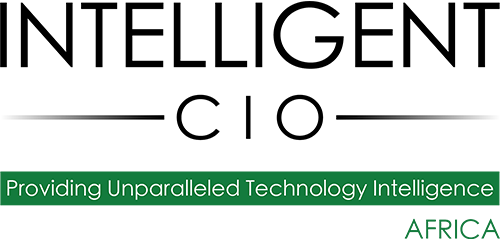Blockchain is a record-keeping technology designed to make it impossible to hack the system or forge the data stored on it, thereby making it secure and immutable. It is a type of distributed ledger technology (DLT), a digital system for recording transactions and related data in multiple places at the same time. Industry experts share Blockchain insights for CIOs, examples and use cases, and how it differs substantially from conventional databases in how it stores and manages information.
Blockchain is a system of recording information in a way that makes it difficult or impossible to change, hack, or cheat the system. A Blockchain is essentially a digital ledger of transactions that is duplicated and distributed across the entire network of computer systems on the Blockchain.
Research firm IDC expects Blockchain spending in the Middle East and Africa (MEA) to reach US$307 million in 2021, which represents a compound annual growth rate (CAGR) of 77.4% for the 2016 to 2021 period. While various industries are evaluating the use of Blockchain, IDC research suggests the region’s public sector (including government, education and healthcare) will spend an estimated US$120.8 million in this space in 2021, accounting for 39.2% share.
Mohammed Mosam, Director of Product Marketing, Sage Africa, Middle East and Asia, said essentially, Blockchain works as a distributed global and public ledger without a central database that can be tampered with. Mosam said the Blockchain uses software stored on thousands of computers across a global network to facilitate and verify financial transactions or data transfers. “Every time a transaction (or block) is added to the chain, everyone must verify it in that network. Once approved, the transaction is irreversible. No one can change or delete data on the chain,” he said. Mosam pointed out that while the future is uncertain, distributed ledger technology (DLT) could emerge as a key technology across many business processes and early adopters could get a competitive edge. “Some believe it has the potential to revolutionise how we send and receive money and data. It cuts out the middleman such as banks, clearing houses and payments gateways, which means there are no transaction fees,” he said. “There’s also a drastically reduced risk of fraud and corruption, and no processing time delays. What this means is that we can begin to really start digitising and automating financial transactions that today require manual control mechanisms, checks and balances.”
According to Mosam, Blockchain is particularly exciting for business-to-business (B2B) transactions because of the trust, speed and transparency it can bring to business processes. He added that Blockchain could alter how companies record transactions with each other, streamlining invoicing, payments and other B2B transactions. “Using smart contracts embedded in Blockchains, companies could streamline many of the processes in a complex supply chain, such as the one you would find in the automotive industry. Blockchain could also be useful for faster, cheaper cross-border transactions and remittances,” he said.
Blockchain and cryptocurrency
With the terms Blockchain, cryptocurrency and Bitcoin often frequently lumped together, along with digital currency what is the main difference with each term?
Dr Neil Pennington, Senior Advisor, Strategy and Innovation, Idoneus, explained that Blockchain is the software-driven digital network that operates the distributed ledger and smart contract system. Dr Pennington said cryptocurrency on the other hand is one term (digital assets and digital currency are others) to describe the tokens that are used to transfer value and manage transactions and incentives in a Blockchain system. “There are many cryptocurrencies that are ‘native’ to particular Blockchains. Bitcoin was the first cryptocurrency associated with the Bitcoin Blockchain system and is by far the largest in value by market cap,” he said.
Ian Jansen Van Rensburg, SE Director, VMware, said by now, anybody who is familiar with the concept of cryptocurrencies would have encountered the term Blockchain. And yet, added Van Rensburg, many still mistake the likes of Bitcoin and Ethereum to be Blockchain or vice versa. “Simply put, if Bitcoin was water, Blockchain is the plumbing that delivers it to you. And from a technical perspective, Blockchain is a decentralised database or ledger consisting of transactions across various network nodes,” he said. “This means that Blockchain has use cases far beyond cryptocurrencies. Today, it is actively being used in logistics, FinTech, insurance, government, pharmaceutical and numerous other industries.”
Van Rensburg said in some respects, Blockchain can be equated to a person’s life on earth. “At birth, this can be called the ‘genesis block’. The genesis block contains the person’s weight, name, ID number, hair and eye colour, and so on,” he said. “Any changes to the person, including life events like (school, graduation, work and marriage) are added in subsequent blocks while maintaining the previous block information. Each of these blocks contains a unique hash in addition to the unique hash of the block before it. This means that when the information on a block is edited in any way, the block’s hash code is changed forever while the hash code on the block after it would not be. This makes Blockchain a very secure technology.”
Jason Wu, Director, SoBitX, said Blockchain is the way to organise the transaction data in a block and chained together in an append-only mode. Wu said normally the data in a Blockchain is stored in a decentralised network instead of the centralised data centre as in a traditional Internet data centre and it’s the essential component of many cryptocurrencies.
“A cryptocurrency is a form of digital asset based on Blockchain technology that owns a network physically that is composed of a large number of computers(nodes),” he explained. “The word ‘cryptocurrency’ is derived from the encryption techniques which are used to secure the network. Bitcoin is the first cryptocurrency based on Blockchain technology. It created a new era for digit assets. Without Blockchain, Bitcoin wouldn’t exist, however, Blockchain technology can be used for different operations such as maintaining a transparent record of assets, tracing the ownership of goods to their sources and provide proof of insurance.”
Blockchain challenges
Given the momentum around Blockchain technology, what are some of the common challenges that CIOs and IT teams deploying this technology face and how can they avoid this?
Mosam noted that scalability is still a problem – and Blockchain technology depends on scalability for success. He explained that significant technological, political and regulatory gaps prevent widespread adoption and the ecosystem remains immature. “To fully use Blockchain technology, businesses must transform their core operating models, systems and processes, which could make the traditional centralised business model irrelevant. Many businesses are not ready to take on this kind of risk,” he said.
He said while Blockchain has been synonymous with cryptocurrencies, a large majority on the African continent are still unbanked. “To date, cryptocurrencies have mostly offered opportunities to those who don’t have access to traditional financial services. Governments and institutions within Africa are also harnessing the Blockchain technology in different industries over products to provide more transparency and control to their citizens, customers and other institutions they might be dealing with,” Mosam observed.
According to Mosam, examples within Africa where governments and private institutions have embarked on exploring and implementing Blockchain technology include De Beers, a South African-based diamond company which introduced Blockchain technology to authenticate diamonds across Africa. “This pilot programme using Blockchain is to ensure its diamonds are authentic, conflict-free and natural. Blockchain provides a permanent, unchangeable record for every diamond registered from the moment it’s mined,” he said. “In the Democratic Republic of Congo, the country is piloting a scheme that uses Blockchain to monitor cobalt mining. The scheme aims to ensure that cobalt used in Lithium-ion batteries (found in cellphones, electric cars, solar batteries) has not been mined by children. Companies are under increasing pressure from consumers and investors to show that cobalt has come through supply chains free of rights abuses.”
Dr Pennington added that on a practical level, the common challenges are selecting the right Blockchain protocol, the right implementation partners and sourcing the right skills. “Strategically, CIOs often face scepticism at board level to adopt Blockchain technology, as it requires a fundamental redesign of business processes. This is becoming less of an issue when boards see the significant business benefits that can and are being delivered,” he said. “Managing data protection, bridging the IT skills gap, the sustainability factor of the technology itself are some of the challenges that CIOs will have to navigate.”
Kirsten Roy-Reid, Co-Founder, Levels Ventures, said a lot of challenges will face CIOs in the region especially if they have the same challenge of not being able to think of what is working for their IT infrastructure. “Most of the challenges would be in getting the right Blockchain engineers to help in implementing projects, budget to get a third party to help them to implement it,” she said. “Like any other IT project challenges, the integration capabilities and ability to run a public Blockchain or private Blockchain as part of the organisation infrastructure can be a key challenge as well. One can summarise the key challenges that face CIOs in general when it comes to adopting Blockchain in their organisations to the five points that include: a lack of adoption, skills gap, trust among users, financial resources and Blockchain interoperability.”
Wu added that the main challenge is that CIOs need to change the thoughts of system structures from a centralised system to a decentralised system. “There are too many differences between Blockchain technology and the traditional IT architecture. Also, added Wu, some of the common challenges that CIOs can face when deploying Blockchain technology are the lack of implementation expertise, skills gap and trust among users,” he said. “Since this technology happens to be very broad, not many organisations are taking this step forward. For example, to track and trace, not only will an organisation have to adopt this technology, but its suppliers too.”
Wu reiterated that since Blockchain technology can be considered as fairly new, Blockchain engineers are in short supply and therefore, the market doesn’t offer many skilled people in this field. “A lack of trust is another obstacle that Blockchain technology is facing. For it to be implemented, the organisation needs to trust the technology itself and trust the parties on the Blockchain network,” he said.
Types of Blockchain technology
Idoneus’ Dr Pennington said there are many different types of Blockchain technologies. He added that some are distinguished for their use cases and some for their smart-contract and consensus technology. “Bitcoin for example is renowned for its proof of work (PoW) consensus algorithm to solve the issue of double-spending in financial transactions, while Ethereum is renowned for being the first to introduce smart contracts,” he explained. “Other Blockchains use proof of stake (PoS) and proof of authority (PoA) to govern the system. For example, a use case-driven technology, Energy Web created a Blockchain technology for global energy markets, Ripple created a Blockchain technology for banks. Other companies utilise core technology to address specific problems. For Idoneus, it uses the Ethereum Blockchain to solve the problem of international high value luxury asset trading using the IDON token.”
Maury G, Managing Partner, Levels Ventures, said Blockchain can easily be implemented in literally any industry and the benefits that come with that are huge. “Globally, there are key industries that are leading the adoption of the Blockchain like banking, real estate, supply chain, healthcare and government. The banking sector, supply chain and healthcare seem to be the leading sectors to adopt the technology in Africa, plus few governments have started to pilot it. For example, Ethiopian schools plan to use the Cardano Blockchain to track student performance,” Maury said. “South Africa, Kenya and Nigeria are leading the Blockchain revolution in Africa with implementations in key business areas in these markets.”
According to a recent PwC global survey, 32% of enterprises surveyed are already having one or two Blockchain projects in their organisation, while 20% of organisations are still researching the technology.
Sage’s Mosam agreed with Dr Pennington and said for now, it’s primarily start-ups driving Blockchain activity in Africa. “Some of the emerging use cases include
Blockchain offering a potential tamper-proof mechanism to create digital identities for poor citizens who lack formal identification documentation, traceability of pharmaceuticals and other commodities to prevent fraud and counterfeiting and proof of ownership for shares in land, animals and other assets,” he said.
Click below to share this article

